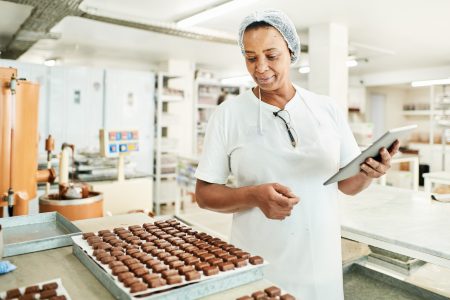
As coffee and chocolate prices on global markets surge, alternative cereal-based products gain strength to continue to meet growing demand in Europe.
As the Euractiv Agrifood Pro Brief reported, the rising cost of raw materials, mainly driven by the effect of climate change in the producing regions, such as Ghana and Ivory Coast (cocoa) and Brazil (coffee), is a challenge for confectionery producers.
They saw their production cost rise, with European consumers likely feeling this in their breakfast bill.
While the price of futures for cocoa has traditionally been between $2,000 and $3,000 (€1,920-€2,880) a tonne in recent years, it has now skyrocketed past €10,000.
The same applies to coffee. Futures of Arabica, the most widely consumed coffee in the world, is currently at €3.2/pound (0.45kg), almost 70% more than at the beginning of the year.
The total coffee market is worth €46 billion, with no less than 9.5 million tonnes of coffee produced worldwide yearly, a report by the NGO Conservation International found, showing that coffee demand could triple by 2050.
Meanwhile, the global coffee substitutes market, worth €13.6 billion in 2023, is projected to grow by over 4.7% annually through 2032, according to figures from Global Market Insight.
Old and new substitutes
Coffee substitutes have been on the EU market for several years now. Soluble barley, for instance, is a known alternative for those who want to reduce their caffeine intake.
Cocoa-free chocolate is, instead, just emerging. For example, Vallée Torréfaction in French Brittany produces such chocolate using roasted malted barley powder, and while it does not taste exactly like traditional cocoa, it can be used to make brownies and all kinds of chocolate-based recipes.
“It costs two to three times less than cocoa,” Paul Vallée, head of the company, told Euractiv. After a year in business, the company produces a tonne of faux chocolate a year, with Vallée believing cocoa-based chocolate is doomed – at least in its industrial use.
“We will always be able to make beautiful things with cocoa. But I think that in 50 years time, it will be a luxury product, and you will have to pay €50 for a single bar,” he predicts.
The German company Choviva, Europe’s leading manufacturer of cocoa substitutes, produces 2,000 tonnes yearly using sunflower seeds or roasted dates. In response to rising consumer demand, Choviva has just invested €30 million to expand and tap into the global market.
By comparison, 40 million tonnes of cocoa-based chocolate are consumed in Europe each year.
Synthetic alternative
The flavour of chocolate comes from the fermentation and roasting of the cocoa beans, much like coffee. The roasting of cereals such as barley and other products can resemble their characteristic taste with the help of other ingredients.
But it is difficult to achieve the ideal taste, colour and texture.
This is why the boldest investors are looking at synthetic alternatives. Scientists at the VTT Technical Research Centre in Finland are studying the similarities between cell-cultured and farm-grown coffee.
When it comes to naming these foods, EU regulations are clear: products marketed as “coffee” must contain coffee beans, while “chocolate” must have at least 95% cocoa butter.
This contrasts with the ongoing legal battle over whether plant-based meat alternatives can be labelled as ‘meat,’ where legal loopholes have allowed for greater flexibility.
As a result, the coffee and cocoa substitutie industry is already coming up with alternatives. Vallée Torréfaction, for example, has branded its product as “Choco Malt Replacer.”
[Edited by Angelo Di Mambro/Martina Monti]
We give you energy news and help invest in energy projects too, click here to learn more






